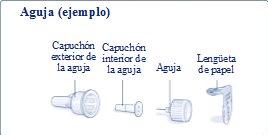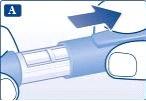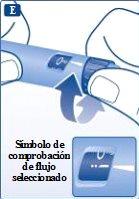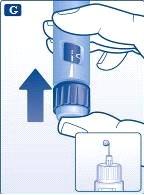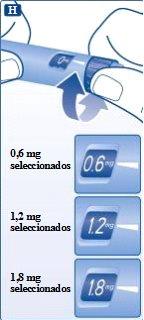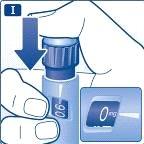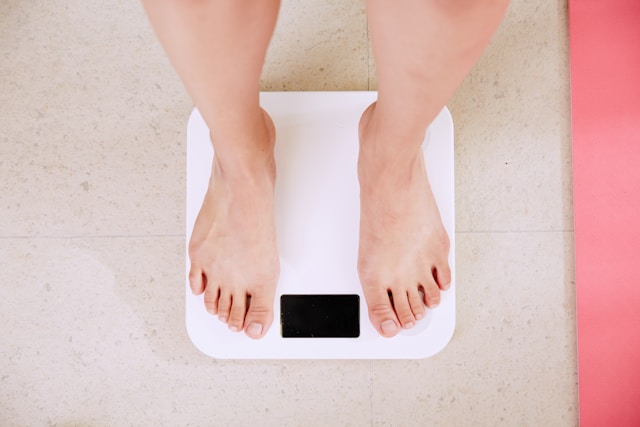
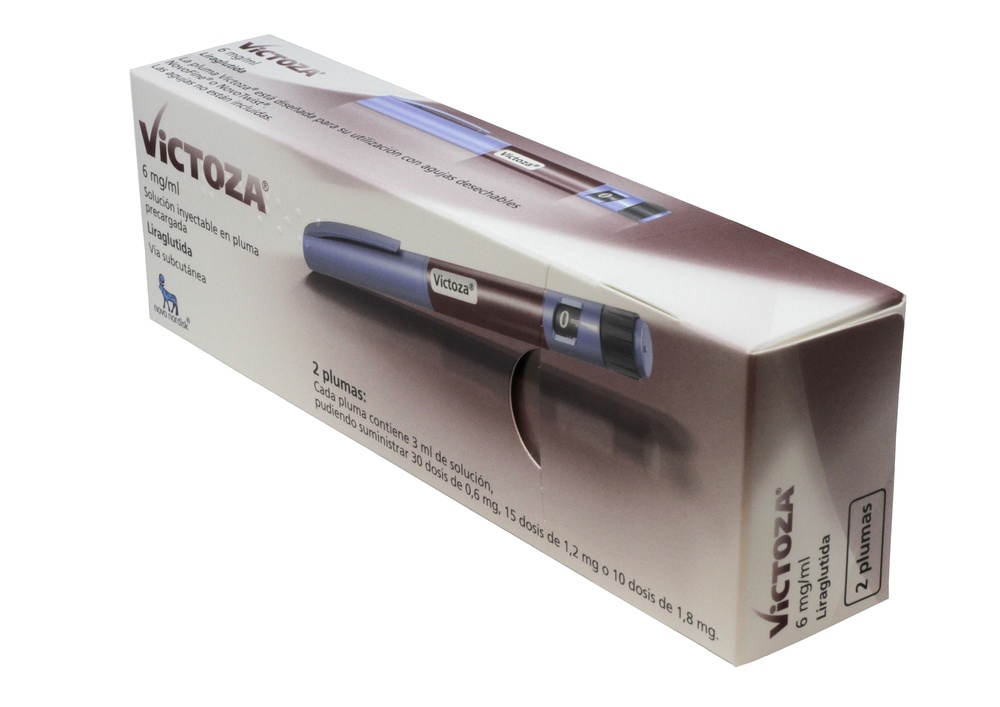
ВІКТОЗА 6 мг/мл РОЗЧИН ДЛЯ ІН'ЄКЦІЙ У ПЕРЕДНАПОВНЕНІЙ ШПРИЦ-РУЧЦІ

Запитайте лікаря про рецепт на ВІКТОЗА 6 мг/мл РОЗЧИН ДЛЯ ІН'ЄКЦІЙ У ПЕРЕДНАПОВНЕНІЙ ШПРИЦ-РУЧЦІ

Інструкція із застосування ВІКТОЗА 6 мг/мл РОЗЧИН ДЛЯ ІН'ЄКЦІЙ У ПЕРЕДНАПОВНЕНІЙ ШПРИЦ-РУЧЦІ
Вступ
Опис: інформація для користувача
Victoza 6мг/мл розчин для ін'єкцій у попередньо наповненому ін'єкційному пристрої
ліраглутид
Всімістно прочитайте цю інструкцію до початку використання цього лікарського засобу,адже вона містить важливу інформацію для вас.
- Збережіть цю інструкцію, оскільки вам може знадобитися знову її прочитати.
- Якщо у вас виникли питання, проконсультуйтеся з вашим лікарем, фармацевтом або медсестрою.
- Цей лікарський засіб призначений тільки вам, і не передавайте його іншим людям, навіть якщо вони мають такі самі симптоми, як і ви, оскільки це може їм зашкодити.
- Якщо ви відчуваєте побічні ефекти, проконсультуйтеся з вашим лікарем, фармацевтом або медсестрою, навіть якщо це побічні ефекти, які не вказані в цій інструкції. Див. розділ 4.
Зміст інструкції
- Що таке Victoza і для чого вона використовується
- Що потрібно знати до початку використання Victoza
- Як використовувати Victoza
- Можливі побічні ефекти
- Збереження Victoza
- Зміст упаковки та додаткова інформація
1. Що таке Victoza і для чого вона використовується
Victoza містить активну речовину ліраглутид. Вона допомагає вашому організму знижувати рівень цукру в крові лише тоді, коли цей рівень цукру надто високий. Крім того, вона сповільнює проходження їжі через ваш шлунок і може допомогти запобігти серцево-судинним захворюванням.
Victoza використовується самостійно, якщо ваш рівень цукру в крові не контролюється достатньо лише за допомогою дієти та фізичних вправ, і ви не можете використовувати метформін (інший лікарський засіб для лікування цукрового діабету).
Victoza використовується разом з іншими лікарськими засобами для лікування цукрового діабету, коли ці засоби не достатньо ефективні для контролю рівня цукру в крові. До них належать:
- оральні антидіабетичні засоби [наприклад, метформін, піоглітазон, сульфонілуреа, інгібітор котранспортера натрію-глюкози типу 2 (іСГЛТ2)] та/або інсулін.
2. Що потрібно знати до початку використання Victoza
Не використовуйте Victoza
- якщо ви алергічні на ліраглутид або на будь-яку іншу речовину цього лікарського засобу (перелічені в розділі 6).
Попередження та обережність
Проконсультуйтеся з вашим лікарем, фармацевтом або медсестрою:
- до початку використання Victoza.
- якщо у вас є або був панкреатит.
Якщо ви знаєте, що вам потрібно буде пройти хірургічну операцію під анестезією (стан
сну), повідомте вашому лікареві, що ви приймаєте Victoza.
Цей лікарський засіб не повинен використовуватися, якщо у вас є цукровий діабет 1-го типу (ваш організм не виробляє інсулін) або цукровий діабет з кетоацидозом (ускладнення цукрового діабету, яке характеризується високим рівнем цукру в крові та збільшенням зусиль для дихання). Він не є інсуліном і, отже, не повинен використовуватися як заміна інсуліну.
Не рекомендується використання Victoza, якщо ви перебуваєте на діалізі.
Не рекомендується використання Victoza, якщо у вас є важке захворювання печінки.
Використання Victoza не рекомендується, якщо у вас є важка серцево-судинна недостатність.
Не рекомендується цей лікарський засіб, якщо у вас є важке захворювання шлунка або кишківника, яке спричиняє запізнення виведення їжі з шлунка (гастропарез), або захворювання кишечника.
Якщо ви відчуваєте симптоми гострого панкреатиту, такі як сильний і тривалий біль у шлунку, негайно зверніться до вашого лікаря (див. розділ 4).
Якщо у вас є захворювання щитоподібної залози, включаючи вузли щитоподібної залози та збільшення розміру щитоподібної залози, проконсультуйтеся з вашим лікарем.
У деяких випадках, коли починається лікування Victoza, може виникнути дефіцит рідини (дегідратاسیون), наприклад, у разі блювоти, нудоти та діареї. важливо уникнути дефіциту рідини, п'ючи багато рідини. Проконсультуйтеся з вашим лікарем, якщо у вас виникли питання.
Діти та підлітки
Victoza може використовуватися у підлітків та дітей віком від 10 років. Нет даних про використання Victoza у дітей молодших 10 років.
Інші лікарські засоби та Victoza
Повідомте вашому лікареві, фармацевту або медсестрі, якщо ви приймаєте, нещодавно приймали або можете приймати інші лікарські засоби.
Зокрема, повідомте вашому лікареві, фармацевту або медсестрі, якщо ви приймаєте лікарські засоби, які містять такі активні речовини:
- сульфонілуреа (наприклад, глімепірид або глібенкламід) або інсулін. Ви можете відчувати гіпоглікемію (низький рівень цукру в крові), коли приймаєте Victoza разом з сульфонілуреєю або інсуліном, оскільки сульфонілуреї та інсулін збільшують ризик гіпоглікемії. Коли ви починаєте приймати ці лікарські засоби разом вперше, ваш лікар може порадити вам зменшити дозу сульфонілуреї або інсуліну. Див. розділ 4 для ознайомлення з симптомами гіпоглікемії. Якщо ви також приймаєте сульфонілурею (наприклад, глімепірид або глібенкламід) або інсулін, ваш лікар може призначити аналіз рівня цукру в крові. Це допоможе вашому лікареві вирішити, чи потрібно змінити дозу сульфонілуреї або інсуліну.
- Якщо ви приймаєте інсулін, ваш лікар порадить вам, як зменшити дозу інсуліну, та порекомендує контролювати рівень цукру в крові більш часто, щоб уникнути гіперглікемії (високого рівня цукру в крові) та кетоацидозу (ускладнення цукрового діабету, яке виникає, коли організм не може розщепити глюкозу через недостатню кількість інсуліну).
- варфарин або інші антикоагулянти. Можуть знадобитися частіші аналізи крові для визначення здатності крові згортатися.
Вагітність та годування грудьми
Повідомте вашому лікареві, якщо ви вагітні, якщо ви думаєте, що можете бути вагітні, або якщо плануєте вагітність. Victoza не повинна використовуватися під час вагітності, оскільки невідомо, чи може вона нашкодити плоду.
Невідомо, чи Victoza проникає в грудне молоко, тому не використовуйте цей лікарський засіб під час годування грудьми.
Водіння транспортних засобів та використання машин
Низький рівень цукру в крові (гіпоглікемія) може зменшити вашу здатність концентрації. Уникайте водіння транспортних засобів або використання машин, якщо ви відчуваєте симптоми гіпоглікемії. Див. розділ 4 для ознайомлення з симптомами гіпоглікемії. Проконсультуйтеся з вашим лікарем для отримання додаткової інформації.
Важлива інформація про деякі компоненти Victoza
Цей лікарський засіб містить менше 1 ммоль натрію (23 мг) на дозу; це означає, що він практично не містить натрію.
3. Як використовувати Victoza
Слідуйте точно інструкціям щодо використання цього лікарського засобу, вказаним вашим лікарем. Якщо у вас виникли питання, проконсультуйтеся з вашим лікарем, фармацевтом або медсестрою.
- Початкова доза становить 0,6 мг один раз на добу протягом щонайменше однієї тижня.
- Ваш лікар порадить вам, коли збільшити дозу до 1,2 мг один раз на добу.
- Ваш лікар може порадити вам продовжувати збільшувати дозу до 1,8 мг один раз на добу, якщо ваш рівень цукру в крові не контролюється достатньо за допомогою дози 1,2 мг.
Не змінюйте дозу, якщо ваш лікар не порадить вам цього.
Victoza вводиться під шкіру (підшкірно). Не вводьте її в вену або м'яз. Найкращими місцями для ін'єкції є передня частина стегна, область живота або верхня частина руки. Змінюйте місце ін'єкції щодня, щоб зменшити ризик розвитку підшкірних вузлів.
Ін'єкцію можна робити в будь-який час доби, незалежно від прийому їжі. Як тільки ви вирішите найзручніший час доби, краще вводити Victoza близько того самого часу доби.
Перед першим використанням ін'єкційного пристрою ваш лікар або медсестра покажуть вам, як ним користуватися.
На зворотному боці цієї інструкції ви знайдете детальні інструкції щодо використання.
Якщо ви прийняли більше Victoza, ніж потрібно
Якщо ви прийняли більше Victoza, ніж потрібно, негайно зверніться до вашого лікаря. Можливо, вам буде потрібне медичне лікування. Ви можете відчувати нудоту, блювоту, діарею або низький рівень цукру в крові (гіпоглікемію). Див. розділ 4 для ознайомлення з симптомами гіпоглікемії.
Якщо ви забули прийняти Victoza
Якщо ви забули прийняти дозу, прийміть Victoza як тільки вам нагадаєте.
Однак, якщо минуло більше 12 годин з моменту, коли ви мали прийняти Victoza, пропустіть забуту дозу. Прийміть наступну дозу наступного дня, як зазвичай.
Не приймайте подвійну дозу або не збільшуйте дозу наступного дня, щоб компенсувати забуту дозу.
Якщо ви припинили лікування Victoza
Не припиняйте лікування Victoza без консультації з вашим лікарем. Якщо ви припините лікування, ваш рівень цукру в крові може збільшитися.
Якщо у вас виникли інші питання щодо використання цього лікарського засобу, проконсультуйтеся з вашим лікарем, фармацевтом або медсестрою.
4. Можливі побічні ефекти
Як і всі лікарські засоби, цей лікарський засіб може викликати побічні ефекти, хоча не всі люди їх відчувають.
Важливі побічні ефекти
Часті: можуть впливати до 1 особи з 10
- Гіпоглікемія (низький рівень цукру в крові). Симптоми гіпоглікемії можуть виникнути раптово та включати: холодний пот, бліда шкіра, головний біль, серцебиття, нудота, надмірний апетит, порушення зору, сонливість, відчуття слабкості, нервозність, тривога, сплутаність, труднощі з концентрацією та тремор. Ваш лікар порадить вам, як лікувати низький рівень цукру в крові та що робити, якщо ви відчуваєте ці симптоми. Це більш ймовірно, якщо ви також приймаєте сульфонілурею або інсулін. Ваш лікар може зменшити дозу цих лікарських засобів до початку лікування Victoza.
Рідкі: можуть впливати до 1 особи з 1000
- Важлива алергічна реакція (анafilактична реакція) з додатковими симптомами, такими як проблеми з диханням, набухання горла та обличчя, серцебиття тощо. Якщо ви відчуваєте будь-які з цих симптомів, негайно зверніться до лікаря та проконсультуйтеся з ним якомога швидше.
- Закупорка кишечника. Важка форма запору з додатковими симптомами, такими як біль у шлунку, набухання, блювота тощо.
Дуже рідкі: можуть впливати до 1 особи з 10 000
- Відомі випадки запалення підшлункової залози (панкреатиту). Панкреатит може бути важким та потенційно смертельним захворюванням. Припиніть використання Victoza та негайно зверніться до вашого лікаря, якщо ви відчуваєте будь-які з цих важких побічних ефектів:
- сильний та тривалий біль у шлунку (області живота), який може поширитися на спину, а також нудота та блювота, оскільки це може бути ознакою запалення підшлункової залози (панкреатиту).
Інші побічні ефекти
Дуже часті: можуть впливати більше 1 особи з 10
- Нудота. Цей ефект зазвичай зникає з часом.
- Діарея. Цей ефект зазвичай зникає з часом.
Часті
- Блювота.
Коли починається лікування Victoza, в деяких випадках може виникнути дефіцит рідини/дегідратування. Наприклад, у разі блювоти, нудоти та діареї. важливо уникнути дефіциту рідини, п'ючи багато рідини.
- Головний біль
- Розлад шлунка
- Воспалення шлунка (гастрит). Симптоми включають біль у шлунку, нудоту та блювоту.
- Хвороба рефлюксу шлунка (ХРШ). Симптоми включають печію.
- Набухання живота або біль у животі
- Розлад шлунка
- Запор
- Гази (вздування)
- Зменшення апетиту
- Бронхіт
- Простуда
- Головокружіння
- Швидке серцебиття
- Змучення
- Біль у зубах
- Реакції в місці ін'єкції (гематоми, біль, подразнення, свербіж та висип).
- Збільшення рівня панкреатичних ферментів (наприклад, ліпази та амілази).
Рідкі: можуть впливати до 1 особи з 100
- Алергічні реакції, такі як свербіж та кропив'янка (вид висипу на шкірі)
- Дегідратування, іноді з зменшенням функції нирок
- Розлад (погане самопочуття)
- Камені в жовчному міхурі
- Воспалення жовчного міхурі
- Зміна смаку
- Затримка виведення їжі з шлунка.
Частота невідома: не може бути оцінена з наявних даних
- Підшкірні вузли можуть виникнути через накопичення білка, званого амілоїдом (амілоїдоз шкіри; частота цього явища невідома).
Звіт про побічні ефекти
Якщо ви відчуваєте будь-які побічні ефекти, проконсультуйтеся з вашим лікарем, фармацевтом або медсестрою, навіть якщо це побічні ефекти, які не вказані в цій інструкції. Ви також можете повідомити про них безпосередньо через національну систему повідомлень, вказану в додатку V. Надсилаючи повідомлення про побічні ефекти, ви можете допомогти забезпечити більш повну інформацію про безпеку цього лікарського засобу.
5. Збереження Victoza
Тримайте цей лікарський засіб поза досяжністю дітей.
Не використовуйте цей лікарський засіб після закінчення терміну придатності, вказаного на етикетці та упаковці ін'єкційного пристрою після CAD. Термін придатності - останній день місяця, який вказано.
До використання:
Тримайте в холодильнику (між 2 °C та 8 °C). Не заморожуйте. Тримайте далеко від морозильної камери.
Під час використання:
Ви можете тримати ін'єкційний пристрій протягом місяця, якщо зберігати його при температурі нижче 30 °C або в холодильнику (між 2 °C та 8 °C), далеко від морозильної камери. Не заморожуйте.
Коли не використовується, тримайте ін'єкційний пристрій з кришкою, щоб захистити його від світла.
Не використовуйте цей лікарський засіб, якщо ви помітили, що розчин не є прозорим та безбарвним або майже безбарвним.
Лікарські засоби не повинні викидатися в каналізацію або сміттєві контейнери. Спитайте вашого фармацевта, як позбутися упаковки та лікарських засобів, які вам більше не потрібні. Таким чином, ви допоможете захистити навколишнє середовище.
6. Зміст упаковки та додаткова інформація
Склад Віктози
- Активний інгредієнт - ліраглутид. 1 мл ін'єкційного розчину містить 6 мг ліраглутиду. Передзавантажена ручка містить 18 мг ліраглутиду.
- Інші компоненти - дигідрат дісодійного фосфату, пропіленгліколь, фенол і вода для ін'єкційних препаратів.
Вигляд продукту та вміст упаковки
Віктоза постачається у вигляді прозорого або майже прозорого ін'єкційного розчину в передзавантаженій ручці. Кожна ручка містить 3 мл розчину, що дозволяє зробити 30 ін'єкцій по 0,6 мг, 15 ін'єкцій по 1,2 мг або 10 ін'єкцій по 1,8 мг.
Віктоза доступна в упаковках по 1, 2, 3, 5 або 10 ручок. Можливо, що не всі розміри упаковок будуть доступні для продажу.
Ігли не входять до складу упаковки.
Власник дозволу на маркетинг та відповідальна особа за виробництво
Novo Nordisk A/S
Novo Allé
DK-2880 Bagsværd
Данія
Дата останнього перегляду цього листка:
Інші джерела інформації
Детальна інформація про цей препарат доступна на сайті Європейського агентства з лікарських засобів: http://www.ema.europa.eu
ІНСТРУКЦІЇ З ВИКОРИСТАННЯ РУЧКИ ВІКТОЗА Перш ніж використовувати ручку, уважно прочитайте ці інструкції. Ваша ручка містить 18 мг ліраглутиду. Ви можете вибрати дозу 0,6 мг, 1,2 мг або 1,8 мг. Ручка призначена для використання з одноразовими ін'єкційними голками NovoFine або NovoTwist довжиною до 8 мм і товщиною до 32 Г (0,25/0,23 мм). |
|
| |
Підготовка ручки Перевірте назву та колір етикеткивашої ручки, щоб переконатися, що вона містить ліраглутид. Використання неправильного препарату може призвести до серйозних ушкоджень. Зніміть ковпачок з ручки. |
|
Зніміть паперову лінгвету з нової одноразової голки. Закручуйте голку прямо та щільно на ручці. |
|
Зніміть зовнішній ковпачок з голки та збережіть його для подальшого використання. |
|
Зніміть внутрішній ковпачок з голки та викиньте його. |
|
Використовуйте завжди нову голку для кожної ін'єкції. Це знижує ризик забруднення, інфекції, втрати ліраглутиду, забруднення голок та неправильних дозувань. Будьте обережні, щоб не згинати або пошкоджувати голку. Не намагайтесь знову надіти внутрішній ковпачок на голку. Ви можете поранитися голкою. | |
Технічне обслуговування ручки
| |
Важлива інформація
| |
Перевірка потоку з кожною новою ручкою Перевірте потік перед першою ін'єкцією з кожною новою ручкою. Якщо ваша ручка вже використовується, перейдіть до "Вибір дози", кроку H. Поверніть селектор дози, поки індикатор не покаже символ перевірки потоку. |
|
Тримайте ручку з голкою, спрямованою вгору. Постукайте по картриджу легенько пальцями кілька разів. Це збирає повітряні бульбашки у верхній частині картриджа. |
|
Тримайте голку, спрямовану вгору, та натисніть кнопку, поки індикатор не покаже 0 мг. На кінчику голки повинна з'явитися краплина ліраглутиду. Якщо краплина не з'являється, повторюйте кроки Едо Гдо чотирьох разів. Якщо краплина ліраглутиду все ще не з'являється, замініть голку та повторюйте кроки Едо Гще раз. Не використовуйте ручку, якщо краплина ліраглутиду не з'явилася. Це вказує на те, що ручка дефектна та вам потрібно використовувати нову. |
|
Якщо ви впустили ручку на твердій поверхні або підозрюєте, що вона не працює правильно, завжди встановлюйте нову одноразову голку та перевіряйте потік перед використанням. | |
Вибір дози Перевірте, що індикатор показує 0мг. Поверніть селектор дози, поки індикатор не покаже необхідну дозу (0,6 мг, 1,2 мг або 1,8 мг). Якщо ви випадково вибере неправильну дозу, щоб змінити її, просто поверніть селектор дози назад або вперед, поки індикатор не покаже правильну дозу. Будьте обережні, щоб не натиснути кнопку ін'єкції, поки повертаєте селектор дози назад, оскільки це може викликати витік ліраглутиду. Якщо селектор дози зупиняється до того, як індикатор покаже необхідну дозу, це означає, що не вистачає достатньої кількості ліраглутиду для повної дози. У цьому випадку ви можете: Розділити свою дозу на дві ін'єкції: Поверніть селектор дози в будь-якому напрямку, поки індикатор не покаже 0,6 мг або 1,2 мг. Введіть дозу. Потім підготуйте нову ручку та введіть залишок міліграмів, щоб завершити свою дозу. Ви повинні розділити свою дозу між поточною ручкою та новою ручкою тільки якщо ви отримали належну підготовку або поради вашого медичного спеціаліста. Використовуйте калькулятор для планування доз. Якщо ви неправильно розділіть дозу, ви можете ввести надто багато або занадто мало ліраглутиду. Ввести повну дозу з новою ручкою: Якщо селектор дози зупиняється до того, як індикатор покаже 0,6 мг, підготуйте нову ручку та введіть повну дозу з нею. |
|
Не намагайтесь вибирати інші дози, крім 0,6 мг, 1,2 мг або 1,8 мг. Числа на дисплеї повинні бути точно виштовхнуті з індикатором, щоб гарантувати, що ви отримуєте правильну дозу. Ви чуєте клацання кожного разу, коли повертаєте селектор дози. Не використовуйте ці клацання для вибору своєї дози. Не використовуйте шкалу картриджа для вимірювання кількості ліраглутиду, яка буде введена, оскільки вона не достатньо точна. | |
Введення дози Введіть голку під шкіру згідно з технікою ін'єкції, рекомендованою вашим лікарем або медсестрою.Потім слідуйте цим інструкціям: Натисніть кнопку, поки індикатор не покаже 0 мг. Будьте обережні, щоб не торкнутися дисплея іншими пальцями чи не натиснути селектор дози збоку під час ін'єкції, оскільки це може блокувати ін'єкцію. Тримайте кнопку натиснутою та залишайте голку під шкірою щонайменше 6 секунд. Це гарантує, що введена повна доза. |
|
Видаліть голку. Потім ви можете побачити краплину ліраглутиду на кінчику голки. Це нормально та не впливає на вашу дозу. |
|
Вставьте кінчик голки в зовнішній ковпачок голки без торкання голки чи зовнішнього ковпачка голки. |
|
Коли голка буде захищена, натисніть зовнішній ковпачок голки обережно до самого низу. Потім зніміть голку. Обережно викиньте голку та знову встановіть ковпачок на ручку. Коли ручка буде порожня, обережно викиньте її без голки. Будь ласка, викиньте ручку та голку згідно з місцевими правилами. |
|
Завжди видаліть голку після кожної ін'єкції та зберігайте ручку без голки. Це знижує ризик забруднення, інфекції, втрати ліраглутиду, забруднення голок та неправильних дозувань. Особи, які доглядають за пацієнтами, повинні бути дуже обережними при xửленні використаних голок, щоб уникнути випадкових уколів та інфекцій. |

Скільки коштує ВІКТОЗА 6 мг/мл РОЗЧИН ДЛЯ ІН'ЄКЦІЙ У ПЕРЕДНАПОВНЕНІЙ ШПРИЦ-РУЧЦІ в Іспанії у 2025 році?
ВІКТОЗА 6 мг/мл РОЗЧИН ДЛЯ ІН'ЄКЦІЙ У ПЕРЕДНАПОВНЕНІЙ ШПРИЦ-РУЧЦІ коштує в середньому 114.72 євро у листопад, 2025 році. Ціна може змінюватися залежно від регіону, аптеки та наявності рецепта. Рекомендуємо перевіряти актуальну вартість у місцевих аптеках або через онлайн-сервіси.
- Країна реєстрації
- Середня ціна в аптеках114.72 EUR
- Діючі речовини
- Потрібен рецептТак
- Виробник
- Інформація є довідковою і не є медичною порадою. Перед прийомом будь-яких препаратів обов'язково проконсультуйтеся з лікарем. Oladoctor не несе відповідальності за медичні рішення, прийняті на основі цього контенту.
- Альтернативи до ВІКТОЗА 6 мг/мл РОЗЧИН ДЛЯ ІН'ЄКЦІЙ У ПЕРЕДНАПОВНЕНІЙ ШПРИЦ-РУЧЦІФорма випуску: РОЗЧИН ДЛЯ ІН'ЄКЦІЙ, 6 мг/млДіючі речовини: liraglutideПотрібен рецептФорма випуску: РОЗЧИН ДЛЯ ІН'ЄКЦІЙ, 6 мг/млДіючі речовини: liraglutideПотрібен рецептФорма випуску: РОЗЧИН ДЛЯ ІН'ЄКЦІЙ, 6 мг/млДіючі речовини: liraglutideВиробник: Zentiva K.S.Потрібен рецепт
Аналоги ВІКТОЗА 6 мг/мл РОЗЧИН ДЛЯ ІН'ЄКЦІЙ У ПЕРЕДНАПОВНЕНІЙ ШПРИЦ-РУЧЦІ в інших країнах
Найкращі аналоги з тією самою діючою речовиною та терапевтичним ефектом.
Аналог ВІКТОЗА 6 мг/мл РОЗЧИН ДЛЯ ІН'ЄКЦІЙ У ПЕРЕДНАПОВНЕНІЙ ШПРИЦ-РУЧЦІ у Польща
Аналог ВІКТОЗА 6 мг/мл РОЗЧИН ДЛЯ ІН'ЄКЦІЙ У ПЕРЕДНАПОВНЕНІЙ ШПРИЦ-РУЧЦІ у Україна
Лікарі онлайн щодо ВІКТОЗА 6 мг/мл РОЗЧИН ДЛЯ ІН'ЄКЦІЙ У ПЕРЕДНАПОВНЕНІЙ ШПРИЦ-РУЧЦІ
Консультація щодо дозування, побічних ефектів, взаємодій, протипоказань та поновлення рецепта на ВІКТОЗА 6 мг/мл РОЗЧИН ДЛЯ ІН'ЄКЦІЙ У ПЕРЕДНАПОВНЕНІЙ ШПРИЦ-РУЧЦІ – за рішенням лікаря та згідно з місцевими правилами.




